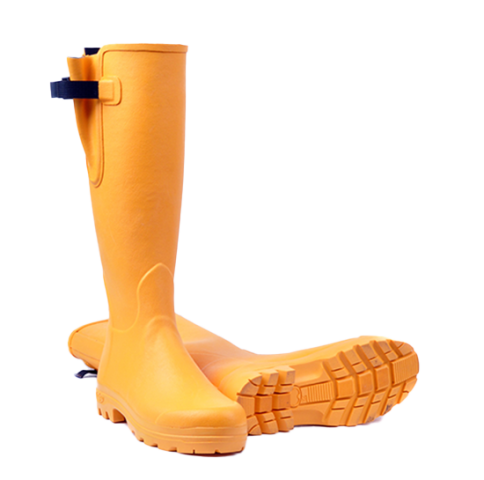Rain boots: comfortable, stylish and casual!

Rain boots are over 150 years old
A first version of the rain boot appeared as early as the 14th century. It was an item of protective clothing worn over the shoe. The roads and streets were full of mud and shoes had to be covered to avoid damaging them. Rain boots became fashionable in England, a country notorious for its capricious weather. It was in 1808 that the Duke of Wellington, Arthur Wellesley, ordered his shoemaker to create shoes with a high, smooth upper. The rain boot can be said to have witnessed much history. Initially made of leather, the first rubber version appeared in 1853, after Hiram Hutchinson, an American industrialist, bought Charles Goodyear's patents on rubber vulcanisation. Called the "Wellington boot", it became a practical shoe and a staple of the 19th century British middle-class aristocracy's wardrobe. For the record, Hiram Hutchinson moved to France where he created his company, À l'Aigle, a name given in homage to his country of origin, the United States.
Technical performance…
Rain boots - which are still called Wellies in Britain - are appreciated for their technical performance in terms of waterproofing and resistance. Their waterproofing is inherent to the material used to make them, rubber, whether natural or synthetic such as PVC (polyvinyl chloride). Flexible, comfortable and lightweight, they are indispensable for dealing with rainy weather and muddy ground, while being pleasant to wear. Ideal for jumping in puddles, they are children's favourite shoes!
With a twist.
Today, rain boots are synonymous with creativity, outdoor activities, fashion accessories and all-season wearability... whether full boots or ankle boots, some are now made of 100% recyclable PVC. In short, they have become environmentally-friendly and essential for the whole family.
Given the large choice of materials, colours and patterns, it's easy to find the right boots for you!





